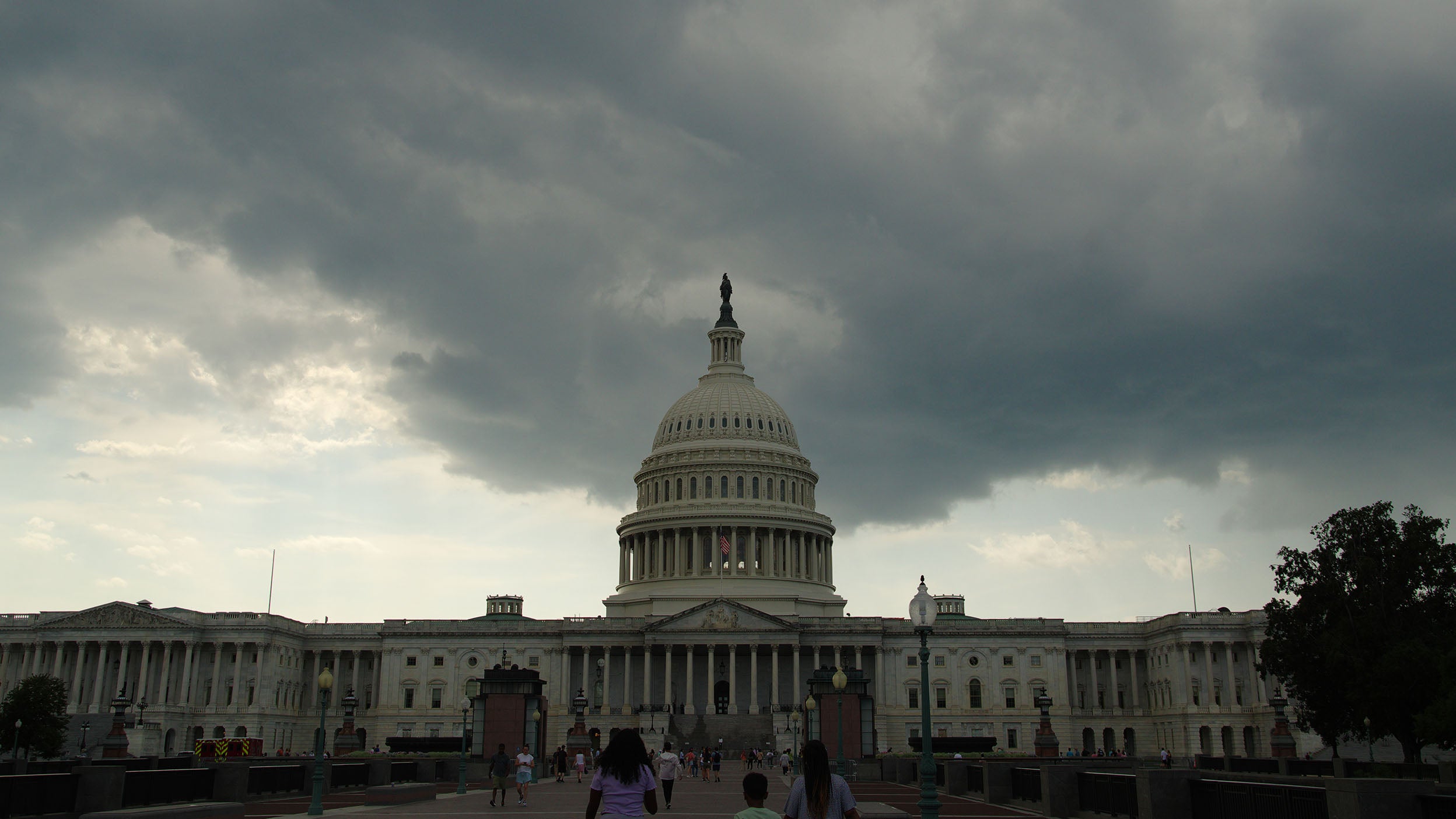
Markets and Economy Will high tariffs push the US into recession?
As a trade war rages, a massive market sell-off in the US and around the world raises many questions for investors.

In my opinion, last week’s comments from the Federal Reserve Chair were performative and don’t change anything in terms of my outlook.
Central banks are focused on ensuring that longer-term inflation expectations — not shorter-term ones — are “well anchored.”
After the S&P downgrade of 2011, markets seem to have become desensitized to warnings and downgrades about US debt.
Last week saw three interesting developments that sparked uncertainty among investors: US long bond yields rose significantly after a disappointing auction of 30-year Treasury bonds1 and hawkish comments from Federal Reserve Chair Jay Powell that policymakers aren’t ready to declare an end to tightening just yet. Survey data showed that consumer inflation expectations in both the eurozone and the US moved higher. And then last Friday, within days of a possible US government shutdown, Moody’s announced that it had changed its outlook on US debt from neutral to negative, threatening a downgrade to the US credit rating. But while this is all very interesting, I don’t believe it’s very relevant for markets. Here’s why.
I expected Federal Open Market Committee (FOMC) officials to revert to hawkish “Fedspeak” if markets proved too ebullient. To quote Queen Gertrude in Shakespeare’s Hamlet, I believe Powell “doth protest too much.” In my opinion, his comments last week were performative, intended to tamp down financial conditions, but they don’t change anything in terms of my outlook.
Ditto for other recent hawkish Fed comments, such as Minneapolis Fed Governor Neel Kashkari’s recent warning: “We haven’t completely solved the inflation problem. We still have more work ahead of us to get it done.”2 This is to be expected given that markets have started celebrating a little too early for the Fed’s taste.
With regard to consumer inflation expectations, the most recent reading for the euro area showed a spike in one-year-ahead expectations. This is similar to the recent spike in US inflation expectations for the one-year ahead period reported by the University of Michigan Survey of Consumers. However, it’s important to note that short-term inflation expectations are typically more volatile and are often driven by energy prices.
Last spring, there was a similar spike for both US and euro area one-year ahead consumer inflation expectations, which coincided with a significant increase in the price of crude oil. I suspect the current spike will be relatively brief given that oil prices have fallen significantly in the past few weeks.
And while central banks pay close attention to inflation expectations, they are focused on ensuring that longer-term inflation expectations — not shorter-term (such as one year) — are “well anchored.” Now there has been a smaller increase in longer-term US consumer inflation expectations in the Michigan survey, but it has not shown up in the New York Fed Survey of Consumer Expectations. In fact, the most recent survey results, released on Nov. 13, show a modest decline for median five-year ahead inflation expectations. By the way, the NY Fed survey also shows a decline for one-year ahead inflation expectations, which could already be reflecting the recent drop in oil prices.
When Moody’s lowered its outlook on US debt last week, it cited the perfect storm of higher interest rates “without effective fiscal policy measures to reduce government spending or increase revenues.”2 The timing of the announcement, within days of a possible government shutdown, does not seem to have been a coincidence. Moody’s explained, “Continued political polarization within [the] US Congress raises the risk that successive governments will not be able to reach consensus on a fiscal plan to slow the decline in debt affordability.”3
However, if Moody’s does follow through with a credit rating downgrade, I doubt it will have any material impact on markets. Keep in mind that we have “been there, done that” before. In the summer of 2011, S&P issued a warning and then subsequently downgraded the US credit rating. That warning was shocking and markets reacted powerfully, but since then markets seem to have become desensitized to warnings and downgrades. In May of 2023, Fitch put the US’ credit rating on watch in the face of the debt ceiling showdown. It followed up in early August by downgrading US credit — with little reaction from markets. I suspect a similar market reaction would occur if Moody’s ultimately downgrades US credit.
The reality is that it’s a very tall order for the US to become less dysfunctional and more fiscally responsible. As we learned with the creation of the Simpson-Bowles National Commission on Fiscal Responsibility and Reform in 2010 (a bipartisan effort to cut the deficit), virtually every line item of federal government spending is considered untouchable by one side or the other — and the political environment has become far more divisive since then.
The good news is that there are not one but two levers to pull to ease the US’ debt problems. One lever — the level of rates — is easier to move than the other lever, reducing the budget deficit. While I hope US lawmakers can cooperate to reduce the budget deficit over the longer term, I am realistic; cutting rates is going to be a lot faster and, in the near term, more effective. Hopefully the Fed will get started on lowering rates sooner rather than later in 2024.
Turning to this week, we will see attention largely shift from central bankers to politicians, especially in the US. This might cause volatility in the near term because, as Otto von Bismarck pointed out back in 1863, “Politics is not an exact science.” Needless to say, that’s quite a big understatement.
But it’s not all about politics and geopolitics next week. The US Consumer Price Index (and Producer Price Index) will be released, which will be an important data point for the Fed to consider at its December meeting. I would like to take this opportunity to remind that not every data point will perfectly support the disinflation narrative. However, I firmly believe disinflation is alive and well, and very much underway.
Date |
Report/Event |
What it tells us |
|---|---|---|
Nov. 14 |
UK Unemployment
|
Indicates the health of the job market. |
Nov. 14 |
German ZEW Economic Sentiment |
Measures opinions on the direction of the economy for the next six months.
|
Nov. 14 |
Eurozone Employment |
Indicates the health of the job market.
|
Nov. 14 |
Eurozone Gross Domestic Product |
Measures a region’s economic activity.
|
Nov. 14 |
Eurozone ZEW Economic Sentiment |
Measures opinions on the direction of the economy for the next six months.
|
Nov. 14 |
US NFIB Small Business Optimism Index
|
Measures how optimistic or pessimistic small business owners are about a variety of economic and business indicators.
|
Nov. 14 |
US Consumer Price Index
|
Tracks the path of inflation.
|
Nov. 15 |
Japan Gross Domestic Product
|
Measures a region’s economic activity.
|
Nov. 15 |
China Industrial Production
|
Indicates the economic health of the industrial sector.
|
Nov. 15 |
China Retail Sales |
Measures consumer demand.
|
Nov. 15 |
China Unemployment |
Indicates the health of the job market.
|
Nov. 15 |
Japan Industrial Production
|
Indicates the economic health of the industrial sector.
|
Nov. 15 |
UK Consumer Price Index |
Tracks the path of inflation.
|
Nov. 15 |
Eurozone Industrial Production
|
Indicates the economic health of the industrial sector.
|
Nov. 15 |
US Producer Price Index
|
Measures the change in prices paid to producers of goods and services.
|
Nov. 15 |
US Retail Sales
|
Measures consumer demand.
|
Nov. 16 |
US Industrial Production
|
Indicates the economic health of the industrial sector.
|
Nov. 16 |
UK Retail Sales
|
Measures consumer demand.
|
Nov. 16 |
Eurozone Consumer Price Index
|
Tracks the path of inflation.
|
Nov. 16 |
US Housing Starts and Building Permits |
Indicates the health of the housing market. |
Nov. 18 |
Argentina run-off presidential election |
Voters choose among the top two candidates. |
Source: Bloomberg
Source: Reuters, “Kashkari: Fed has more work to do to control inflation,” Nov. 6, 2023
Source: Moody’s

As a trade war rages, a massive market sell-off in the US and around the world raises many questions for investors.

With policy uncertainty rattling markets and consumer sentiment, it’s important to remember the market's long-term growth throughout its history.

There are signs of softening global growth prospects and rising economic policy uncertainty, plus a tectonic shift in fiscal stimulus around the globe.
Important information
NA3229175
Header image: Philip Yabut / Getty
Some references are US centric and may not apply to Canada.
Past performance is not a guarantee of future results.
This does not constitute a recommendation of any investment strategy or product for a particular investor. Investors should consult a financial professional before making any investment decisions.
All investing involves risk, including the risk of loss.
In general, stock values fluctuate, sometimes widely, in response to activities specific to the company as well as general market, economic and political conditions.
Fixed-income investments are subject to credit risk of the issuer and the effects of changing interest rates. Interest rate risk refers to the risk that bond prices generally fall as interest rates rise and vice versa. An issuer may be unable to meet interest and/or principal payments, thereby causing its instruments to decrease in value and lowering the issuer’s credit rating.
Alternative products typically hold more non-traditional investments and employ more complex trading strategies, including hedging and leveraging through derivatives, short selling and opportunistic strategies that change with market conditions. Investors considering alternatives should be aware of their unique characteristics and additional risks from the strategies they use. Like all investments, performance will fluctuate. You can lose money.
The risks of investing in securities of foreign issuers can include fluctuations in foreign currencies, political and economic instability, and foreign taxation issues.
Disinflation, a slowing in the rate of price inflation, describes instances when the inflation rate has reduced marginally over the short term.
Inflation is the rate at which the general price level for goods and services is increasing.
Core inflation is the change in the costs of goods and services, but it does not include those from the food and energy sectors.
Headline inflation is the total inflation in an economy, including food and energy.
The Consumer Price Index (CPI) measures change in consumer prices as determined by the US Bureau of Labor Statistics.
A basis point is one hundredth of a percentage point.
The Federal Open Market Committee (FOMC) is a 12-member committee of the Federal Reserve Board that meets regularly to set monetary policy, including the interest rates that are charged to banks.
Hawkish describes policymakers who favor interest rate hikes as a strategy to temper inflation.
Dovish refers to an economic outlook which generally supports low interest rates as a means of encouraging growth within the economy.
The European Central Bank (ECB) is responsible for the monetary policy of the European Union.
The eurozone (also known as the euro area or euroland) is an economic and monetary union of European Union member states that have adopted the euro as their common currency.
GDP (Gross domestic product) is a broad indicator of a region’s economic activity, measuring the monetary value of all the finished goods and services produced in that region over a specified period of time.
The Survey of Consumers is a monthly telephone survey conducted by the University of Michigan that provides indexes of consumer sentiment and inflation expectations.
Tightening monetary policy includes actions by a central bank to curb inflation.
The yield curve plots interest rates, at a set point in time, of bonds having equal credit quality but differing maturity dates to project future interest rate changes and economic activity.
The opinions referenced above are those of the author as of November 13, 2023. These comments should not be construed as recommendations, but as an illustration of broader themes. Forward-looking statements are not guarantees of future results. They involve risks, uncertainties and assumptions; there can be no assurance that actual results will not differ materially from expectations.
This link takes you to a site not affiliated with Invesco. The site is for informational purposes only. Invesco does not guarantee nor take any responsibility for any of the content.